This is the most complex group of islands in Greece lying in the middle of the Aegean sea. The Cycladic archipelago which seems to be an extension of Euboea and Attica to the southeast consists of around 2200 islands, islets, and various rocky outcroppings.
All of these together form an imaginary circle around sacred Delos, the island which according to mythology, appeared from amid the waves to become the land of Apollo. And indeed, where could a place with more sunlight than the Cyclades have been found for the god of light?
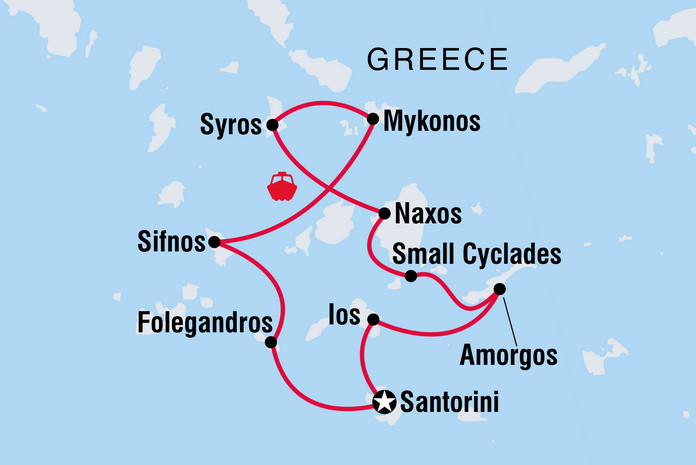
These islands were inhabited very early, in the Neolithic period,
Their high peek began in the 3rd millennium B.C when the famous Cycladic civilization developed, a civilization older than the Minoan but which later grew in tandem with it and produced exquisite works of art such as the marvelous Cycladic figurines (small statues of people).
The Minoan Cretans became the rulers of the Cyclades in the 2nd Millenium B.C. and founded colonies in Milos and Santorini. They were followed by the Myceans in 1450 B.C and then the Dorians in 1100 B.C. The Ionians came in the 10th century and in the 7th century B.C created the religious center in Delos.
The Persian tempest shook the Cyclades in 490 B.C and they were later conquered by the Macedonians, the Rhodians, and the Romans. The Byzantine period was a very long one. It began in 395 A.D and lasted for approximately 800 years. During that period the Byzantine churches were built on the islands.
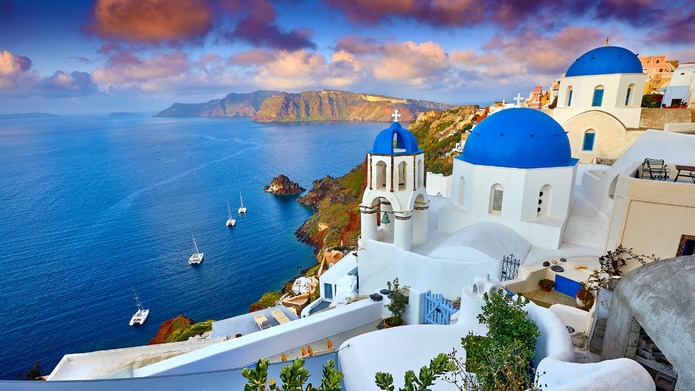
The rule of Byzantium was so lax that under its sovereignty the islands were occupied by the Goths, Slavs, and Normans.
A highly important period began in 1204 with Venetian rule which lasted for over 300 years and left its print on the islands. The castles and towers you see today are the work of the Venetians. The Turks captured the islands in 1537 under Barbarossa. Later, most of them took part in the Greek struggle for independence and were united with Greece in 1832.
Today, the Cyclades are called the “white islands” because the villages built with the renowned Cycladic traditional architecture look pure white on the usually barren earth creating a superb contrast to the deep blue color of the sea.
With their dry climate, cool summers, abundant sunshine, and fabulous sand beaches the Cyclades guarantee you an unforgettable holiday.
Andros is the most northern island of the Cyclades and the second largest after Naxos. It has steep cliffs and beaches with white sand. It has however one advantage which other islands don’t- it is extremely verdant and irrigated with plentiful running water. There are large numbers of olive trees, pines, and fruit trees on the island, while in its ravines, the place of villages likeMenites, Stenies, and Apikia, the vegetation is lush. Andros also has Sariza with its famous spring water which is bottled and available all over Greece.
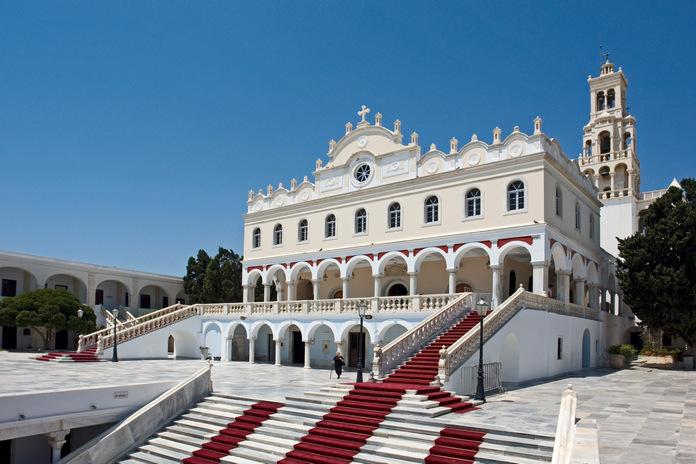
Most of the visitors to Tinos are Greeks since Tinos is the island of Our Lady, the greatest center of pilgrimage in Greece. The island has long days of sunlight in the summer which helps make Tinos one of the most interesting places in the Cyclades.
Mykonos is now the most cosmopolitan island in the world, more famous than Capri, more fashionable than Hawaii. The island also has a high number of golden sand beaches and beautiful architecture.
Syros is an island with fine beaches, attractive bays, and antiquities. All the houses are old, of the last century, with their own color and their own particular charm.
Paros has long been a well-known tourist attraction, one of the favorite islands for visitors together with Mykonos, Ios, and Santorini. The beautiful capital of Parikia and the pretty village of Naoussa are among its most popular spots.
Right next to Paros is a small island called Antiparos. This island has low hills, a large number of good beaches, and a charming little harbor full of fishing boats. You can also take a one-day trip to Antiparos from Parikia port in Paros.
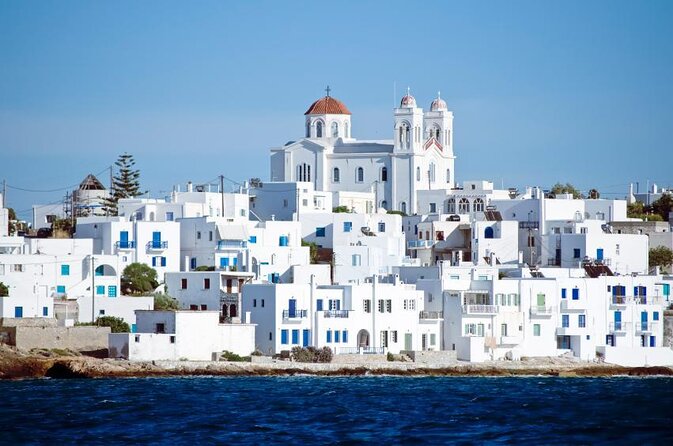
Naxos is the largest island of the Cyclades. It’s a fertile island with rugged mountains and green meadows. It has pretty Cycladic villages and a large number of Venetian towers scattered over it. It is also famous for the marble kouroi.
Many believe that Ios is the most beautiful island of the Cyclades. The pretty little chapel of St. Irene at the entrance to the harbor, the town of Chora…all this at once creates this impression.
The beauty of Santorini is beyond words. Sun-washed white houses hanging on the cliff 300m above sea level, small boutique hotels, and the most romantic sunset in the world have made this island world-famous. It is also a great starting point for exploring the other nearby islands. Take a chance to visit the small island of Thirassia just across Santorini.
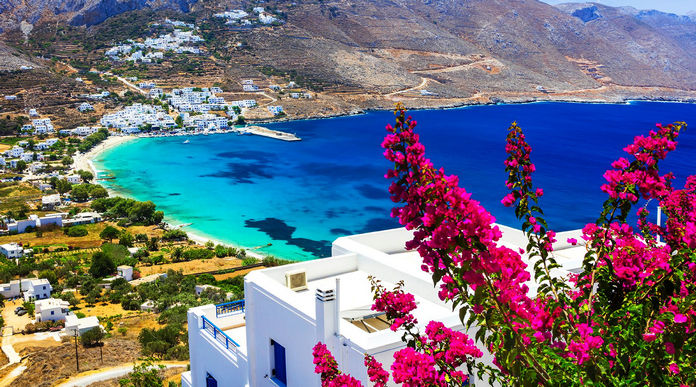
Amorgos is the most easterly island of the Cyclades and most near to Astypalaia. The town of Chora stands high on the rugged mountains, while the renowned Hozoviotissa monastery is perched on the rock of a sheer cliff.
Sikinos owes its name to Sicinus. It was also called Oenoe, a reference to its many vines. It has a large number of olive trees producing a small-sized olive said to be the source of the very best oil.
Anafi is the island which in mythology rose from waves at the command of Apollo to save the Argonauts from a savage storm that overtook them during their voyage. Why not benefit from this “miracle” as visitors, of course, not as castaways.
The Lesser Cyclades like Koufonisia, Irakleia, Donousa are smaller islands but definitely worth visiting.